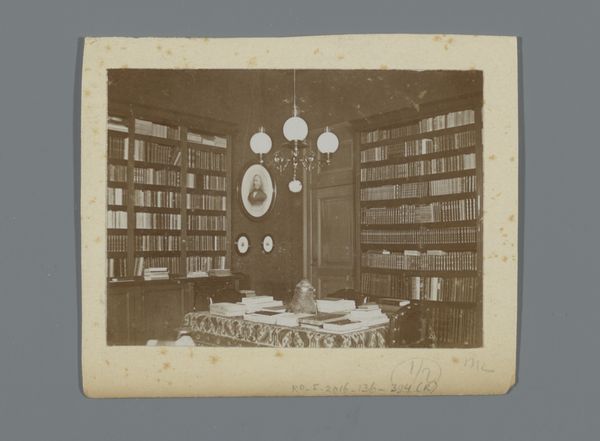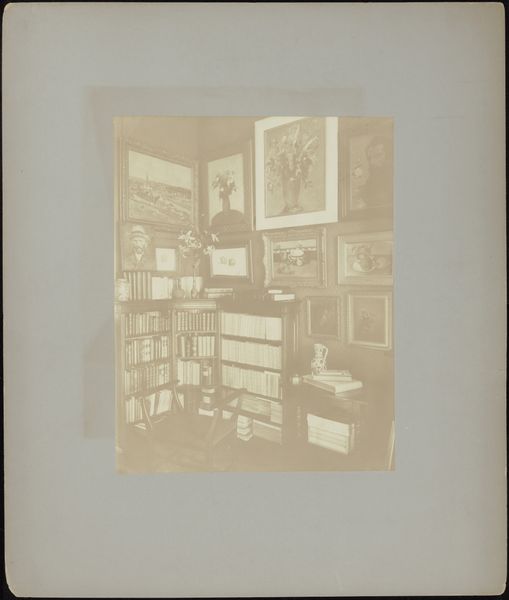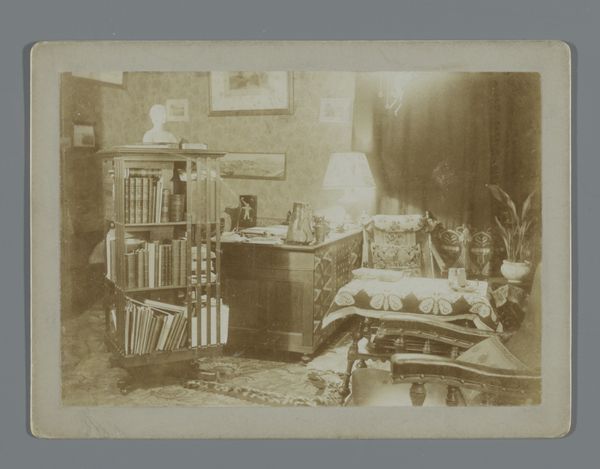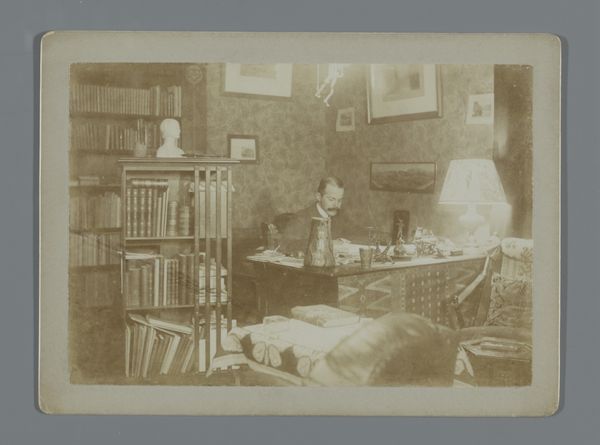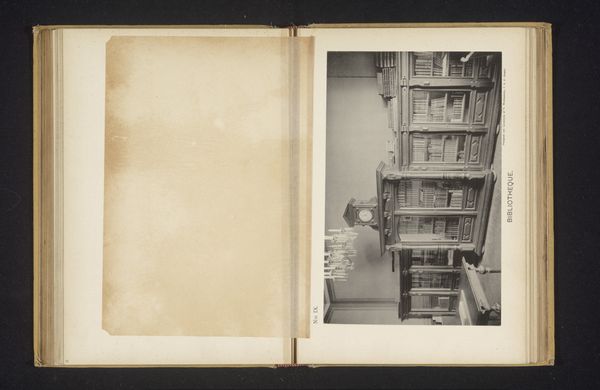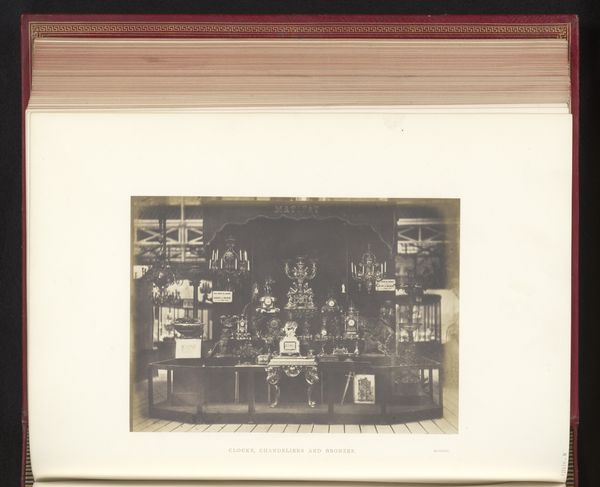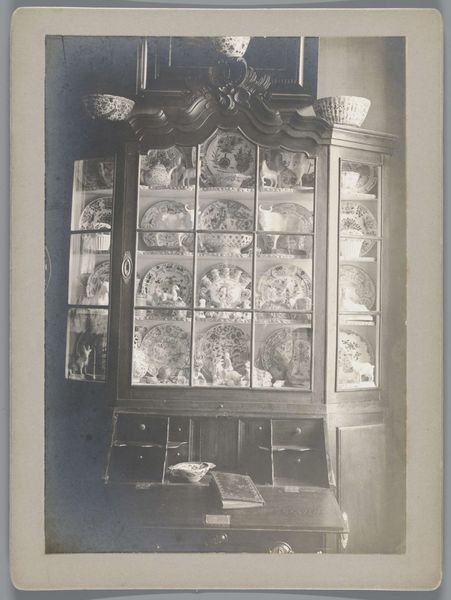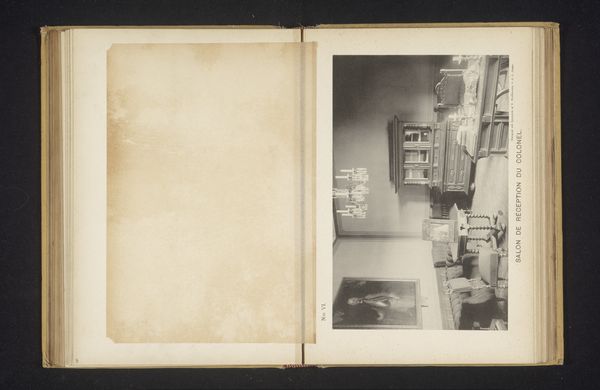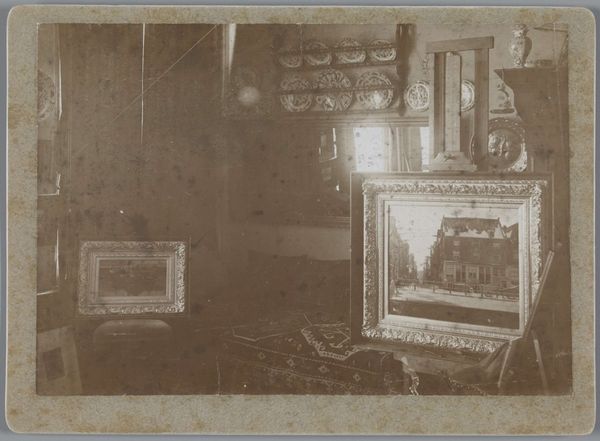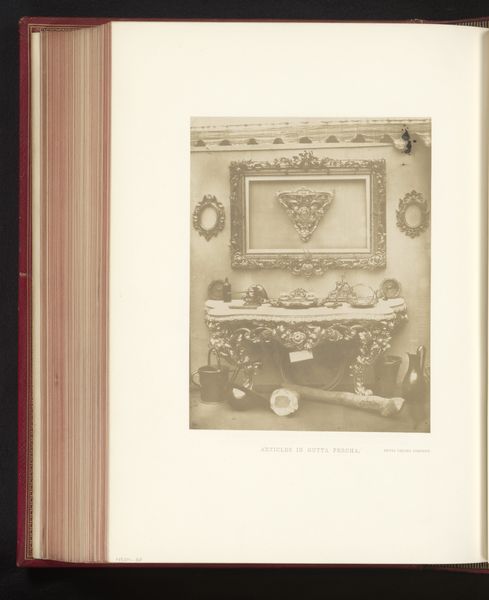
Collage van drie foto's van het interieur van de kamer Henk van den Berg op de Turfmarkt 3 c. 1890 - 1896
0:00
0:00
collage, photography
#
collage
#
photography
Dimensions: height 80 mm, width 107 mm, height 267 mm, width 118 mm, height 109 mm, width 80 mm
Copyright: Rijks Museum: Open Domain
Curator: This intriguing photographic collage, made between about 1890 and 1896, offers a glimpse into the room of Henk van den Berg, located on Turfmarkt 3. It is assembled from three different photographic views of the same space. Editor: My first impression? It feels intensely personal, almost claustrophobic. Every surface seems covered in objects—books, pictures, fans... it's a sensory overload, even in black and white. Curator: Indeed. We see here the embodiment of late 19th-century bourgeois domesticity and the culture of collecting, reflecting imperial trade through its Japanese inspired art objects. This desire for ‘more’ can be directly correlated to socio-economic conditions afforded to this demographic and era. Editor: Absolutely, this imagery makes me think about cultural appropriation. To me, it's also a performative space, staged to project an image of cultivated taste and worldly knowledge. Who was this room *for*? Was it purely a private sanctuary, or was it meant to impress visitors, communicating an ideal of elevated masculine intellectualism and good taste? Curator: A crucial point. And that question resonates particularly because of how photography in this era served the politics of public display as well as personal mementos. We might read the wallpaper's patterning, as well as the interior decoration and design details, as deliberate strategies for fashioning a certain image of the self, both private and ready for society's gaze. The performativity of class is certainly visually asserted here. Editor: Seeing this image makes me reflect on how the personal and the political become entangled. Whose stories are valued enough to be preserved, aestheticized, and put on display for others, especially since Van den Berg collected artwork reflecting a different culture than his own. Curator: A relevant closing question. Studying this photographic collage, then, not only illuminates domestic life but asks questions of ownership and self representation in an evolving colonial Dutch landscape. Editor: And by encouraging reflection on these complex social and historical forces in visual art, perhaps we may encourage social transformation of museum audiences today.
Comments
No comments
Be the first to comment and join the conversation on the ultimate creative platform.
